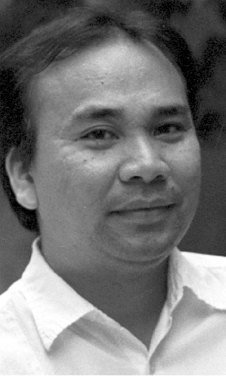
Jobers Bersales
Forgive me for borrowing and then altering the title of Nobel Prize winner Gabriel Garcia Marquez’s 1985 novel “Love in the Time of Cholera,” but I feel it appropriate if we are to understand the allegations now hurled at Police Supt. Maria Cristina Nobleza and her alleged lover, the reported bomb expert Renierlo Dongon.
One shudders at the thought if their collusion is indeed true and had they succeeded in their quest to help the dwindling Abu Sayyaf Group (ASG) terrorists holed up in the mountain fastness of Clarin. Those terrorists deserve far worse than just being hungry and on the run — a far lighter punishment than what they and their ilk do to those they kidnap, keep in cages for months and then unceremoniously behead.
This love affair, nonetheless, is an interesting twist to this sad saga that has now thrust peaceful and oh-so-idyllic Bohol into the limelight.
The last time Bohol figured violently in national (if one may call it that) consciousness was probably the long drawn-out Francisco Dagohoy revolt and all of its 81 long years, with the command center located right near this area where the ASG stragglers are waiting for their eventual doom.
Ah, such is love that it can really turn not just one’s eyes blind but also, more dangerously in this case, the mind. All those police trainings and pledges of loyalty to the nation and of keeping peace and order for the Filipino people went down the drain when Nobleza met Dongon, it would seem.
Mind you, this is not the first time in the history of this country that love has figured in the middle of an armed conflict, much to the disadvantage of one party.
At the height of the Moro depredations of the Visayas in the 1700s, marked by the sacking of coastal settlements and the massive kidnapping of natives to be sold off to slavery in Sulu, Borneo, Ternate, Batavia, etc., there is the story of Datu Ilim, discussed unfortunately just so briefly in Vicente Barrantes’ “Guerras Piraticas de Filipinas…” published in 1878.
Datu Ilim, it seems, was probably a relative of the Sulu Sultan who established a base in Iloilo after falling in love with the daughter of the principal of Ajui town. So smitten was the datu that he had himself baptized and took on the name Jose Mariano del Carmen.
Alas, his Ilongga wife (given the patriarchy of the time) remains unnamed. What we know for certain is that he did marry her and once he did, the brave datu distinguished himself to the Spanish crown by running after those swift Moro panco boats and killing his former Moro raiding fellows. So clear was his loyalties that he was placed in the navy captaincy, which was confirmed by the Spanish Crown.
Barrantes describes his efforts this way: “Ilim hasta su muerte fué fiel á nuestra causa, y perseguidor incansable de corsarios.” (Until his death, Ilim was faithful to our cause, tirelessly pursuing enemy corsairs.)
Now, that love worked in our ancestors’ favor: here was one Moro who went to the other side and distinguished himself for the love a Visayan noble woman — easily the stuff of a telenovela, or a comedia, the serious drama of that time (which hence should not be equated directly as today’s comedy shows).
The current one, unfortunately, would have been disastrous not just for Bohol but for the country as well because Nobleza and Dongon were apparently living in Panglao right smack where the Asean summit of Trade Ministers was going on. Why they found it difficult to explode bombs or find warm bodies to do so may have something to do with the failed ASG operations in Inabanga.
There is a lesson to be learned here, two in fact — one personal, the other tactical. On the personal: Never let the heart rule the head, which is easier said than done when it comes to love. On the tactical: Never stray from the comfort of familiar territory without a community ready to defend you.
During those dreadful and tragic pirate raids of the Spanish period, the Moro raiders were aided in part by the fact that they had established secure bases in Mindoro, Romblon, Samar and Masbate complete with houses and families under the very noses of the Visayan native: bases. They could repair their boats and retire to these bases unmolested for a time.
Of course, the Spanish authorities later got wind of these places and immediately razed and attacked them. (But by then thousands of Visayans had already been sold off to slavery, eventually giving rise to the stupid notion that the word Visaya means slave.)
Unfortunately for the ASG, building a secure base with just one Boholano convert was sheer adventurism. And so their comeuppance has finally arrived.